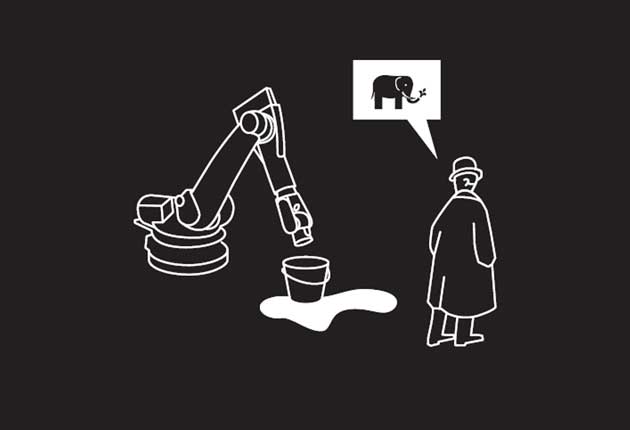Design Real, Serpentine Gallery, London
Is this a chair I see before me?

Your support helps us to tell the story
From reproductive rights to climate change to Big Tech, The Independent is on the ground when the story is developing. Whether it's investigating the financials of Elon Musk's pro-Trump PAC or producing our latest documentary, 'The A Word', which shines a light on the American women fighting for reproductive rights, we know how important it is to parse out the facts from the messaging.
At such a critical moment in US history, we need reporters on the ground. Your donation allows us to keep sending journalists to speak to both sides of the story.
The Independent is trusted by Americans across the entire political spectrum. And unlike many other quality news outlets, we choose not to lock Americans out of our reporting and analysis with paywalls. We believe quality journalism should be available to everyone, paid for by those who can afford it.
Your support makes all the difference.The Serpentine Gallery exists to show off art. Art, as we all know, is perfectly useless. It exists to be admired. Now, all of a sudden, the Serpentine Gallery has had a change of heart. It has hired a curator with a mesmerisingly unpronounceable surname, Konstantin Grcic (I hear the man who is making a podcast for The Guardian first asking how the name is pronounced, then taking several runs at it, falling back, and running again), to assemble a show of 46 objects which are useful. What is more, these particular objects are examples of their kind. There are variants upon them everywhere that we look. I am sitting on one of them now. Yes, everywhere we turn our heads these days there is a bed, a child's bicycle, a plastic chair, the arm of a wind turbine flailing the air.
So what happens when we show off useful objects in an art gallery? We begin to relate them to the art experience. We just can't seem to help ourselves. We look for beauty, elegance, singularity. We check out the colours for evidence of harmonious relations between one hue and another. We wonder why this bed, for example, seems, in part, to resemble an abstract painting, and whether it is a better, a more pleasing bed, for doing so. Most of all, we pause, and stop regarding them solely as objects of utility. We begin to respect them a little more. We begin to scrutinise them with a little more delicacy. We ponder upon the relationship between beauty and usefulness, and we speculate upon the fact that when a good designer gets it right, our lives are perhaps improved a little.
And that is the purpose of this rather delightful show; to make us reflect upon the nature of objects that are designed for our use, to speculate upon whether they are good or bad, ergonomically sound or otherwise, good for the world or not. The objects are well spaced and well displayed, often humorously so. Look at this perfectly gorgeous copper fishing lure, with its brazen feathered tail, and how it is mounted for our pleasure, behind glass. And then there is a plastic chair – oh that blasted modernist ideal! – which seems to hang from the wall, half way up, like one of those balloons we used to rub and rub and then stick on to the top of uncle's bald head for the sheer hell of living.
The central area is good, too. It consists of a circle of 25kg sand bags, heaped four high, across which we are invited to sprawl. A circle of TV screens spews out random facts about injection moulding, the usefulness of robots, etc. Computers invite us to explore more fully all the objects we have just seen, on the show's website, www.design-real.com. So what do we find out about the design and fabrication of objects such as these? That bicycle production outstrips car production worldwide three to one, for example. And there are some not so evident pieces of information too, verging on the metaphysical: the speculation that lightness may be a human objective. Hmmm.
To 7 February 2010 (020 7402 6075)
Join our commenting forum
Join thought-provoking conversations, follow other Independent readers and see their replies
Comments